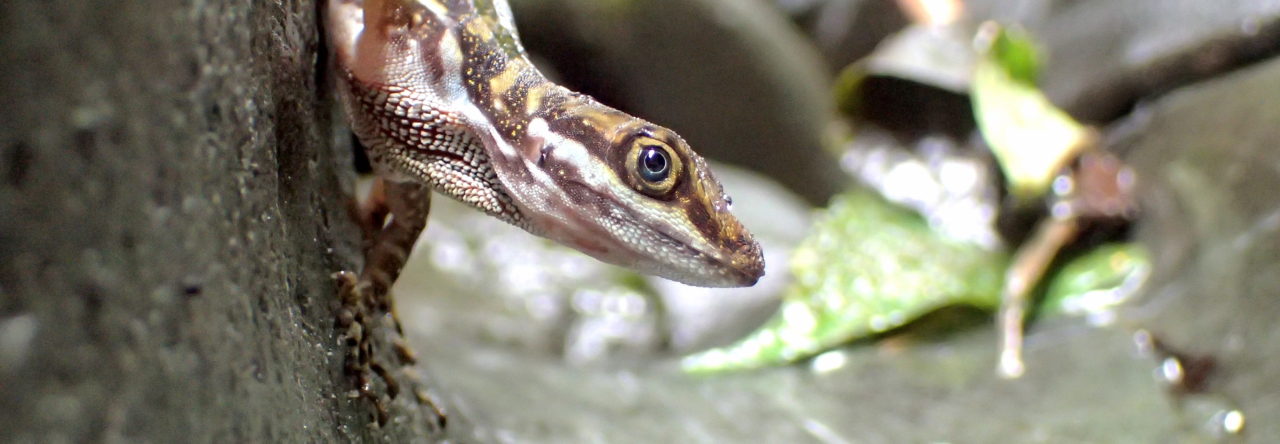
Thanks to the work of Roger Thorpe and colleagues, Lesser Antillean anoles are renowned as an example of adaptive geographic variation. On many islands in the Lesser Antilles, populations in wet areas, where vegetation is lush, are green in color, whereas those in more xeric areas tend to be a drab gray, often with markings on their back. This pattern is repeated on many different islands, the convergent geographic variation thus making a strong case for the adaptive basis of anole coloration.

See Pavitra Muralidhar’s previous post for more information on geographic variation in Lesser Antillean anoles.
In a new paper in PLoS One, Thorpe takes this work a step further, asking whether we can use the parallel patterns seen across Lesser Antillean islands to predict the coloration of an anole species on another island. The focal species is Anolis bonairensis, which occupies the extraordinarily dry island of Bonaire (see our previous posts on this species).
The prediction: A. bonairensis should be grayer and drabber than populations of anoles that occur at the driest sites on Lesser Antillean answers.
The answer: yes! Just as predicted, Anolis bonairensis is one drab lizard. Score one for evolutionary predictability!
Anolis bonairensis is represented by the red circles. The x-axis goes from aridity on the left to the most mesic on the right. As you can see, A. bonairensis‘s color and patterning is well-predicted by variation in other species.








 Two male festive anoles (Anolis sagrei) fighting in Texas. From
Two male festive anoles (Anolis sagrei) fighting in Texas. From 









